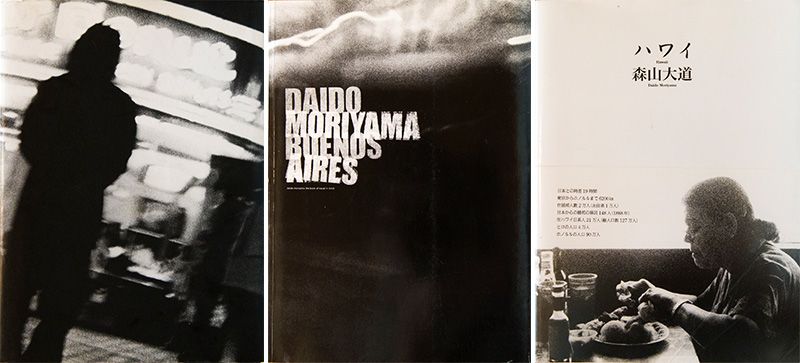
Legends: Japan’s Most Notable Names
Moriyama Daidō: Photographer with the “Eyes of a Stray Dog”
Culture- English
- 日本語
- 简体字
- 繁體字
- Français
- Español
- العربية
- Русский
Looking at the Interplay of Light and Shadow
The radical expression of Moriyama and Nakahira, which had an apt backdrop in the age of rising protest against the revision of the Japan-US Security Treaty, began to gradually lose traction with the start of the 1970s and the rapid ebbing of Japan’s “season of politics.” Whatever Moriyama did seemed to elicit no response, and as he struggled to find a foothold he gradually came to feel that he had lost his way. By the end of the 1970s he was closeting himself at home, driven to a place where he could take almost no pictures. Debilitated both physically and mentally, what finally brought him back to the world of photography was the start of a series entitled Hikari to kage (Light and Shadow) in Shashin jidai (Photography Age), a magazine focused mainly on Araki Nobuyoshi that launched in 1982.
 “Hikari to kage 1 (hana)” (“Light and Shadow 1: Flower,” 1981). (© Daidō Moriyama Photo Foundation)
“Hikari to kage 1 (hana)” (“Light and Shadow 1: Flower,” 1981). (© Daidō Moriyama Photo Foundation)
 Moriyama published Light and Shadow as a collection in 1982.
Moriyama published Light and Shadow as a collection in 1982.
The photos in Light and Shadow, published as a photo collection in 1982, were scenes Moriyama came upon with intersecting brightness and darkness, starting with a peony he happened to photograph near his house. He returned to the starting point, taking and printing straightforward shots of primordial views that could be called the basics from the dawn of photography, and regained the confidence to resume his journey as a photographer. Reflecting on this time in his 1984 Memories of a Dog, he wrote, “I stood with my camera in the light, no longer thinking of anything. Below my eyes was my shadow. That was enough. . . . Then I started off toward a time in which I had no intention of ever again being at a standstill.”
In addition to Light and Shadow, the journal Photography Age carried a succession of ambitious and experimental works by Moriyama: Tokyo (1982–84), Nakaji e no tabi (A Journey to Nakaji, 1984–85), Documentary (1985–86) and Utsukushii shashin no tsukurikata (How to Make Beautiful Photos, 1986–88). These works would later be published as standalone photo collections. He spent 1988 and 1989 in Paris, where he dreamed of launching a gallery. This wish would go unrealized, but there were also fruitful outcomes, such as his photos of the ancient Moroccan capital of Marrakesh in Northern Africa.
Radiating Snapshots
In the 1990s Moriyama’s activities as a photographer accelerated and broadened considerably. From 1993 through 1997, the apparel maker Hysteric Glamour, led by Kitamura Nobuhiko, published three photo collections billed Daido Hysteric. The themes were street objects (1993), city crowds (1994), and scenes of Osaka, Moriyama’s hometown (1997). These large-format books, spanning more than 300 pages each, were infused with Moriyama’s cumulative experience in street snapshots, becoming a series that may be called a culmination of his work to that time.
 Two of the Daido Hysteric volumes that came out in the 1990s.
Two of the Daido Hysteric volumes that came out in the 1990s.
His collection Shinjuku in 2002 was another noteworthy achievement. Shinjuku is an area that Moriyama had been fond of photographing since he moved to Tokyo in 1961—a place where, by placing himself in its crowds and encountering all kinds of people, he felt energized as a photographer. Those “grand outskirts and rough quarters” were brought together in a 600-page collection of 524 photographs. In the 1990s and 2000s he also began spending quite a bit of time overseas, publishing the collections Buenos Aires (2005), Hawaii (2007), and Saõ Paulo (2009). Looking at these collections, one sees that Moriyama is filled with conviction that drives him to take slices of life, in his own style, anywhere in the world.
 The Shinjuku, Buenos Aires, and Hawaii collections show an artist increasingly at home around the globe.
The Shinjuku, Buenos Aires, and Hawaii collections show an artist increasingly at home around the globe.
A Stray Dog Wandering an Interconnected World
Moriyama’s creative impulse remains as strong as ever, and his international profile continues to grow even now that he is in his seventies. At his 2016 one-man exhibition, “Daido Tokyo” (Fondation Cartier pour l’art contemporain, Paris), two works in particular had a huge impact on visitors: “Tokyo Color,” a color photo taken with a digital camera, and “Inu to ami taitsu” (Dog and Fishnet Tights), a powerful black and white piece.
 The celebrated images from the 2016 “Tokyo Color” show, 2008–2015. (© Daidō Moriyama Photo Foundation)
The celebrated images from the 2016 “Tokyo Color” show, 2008–2015. (© Daidō Moriyama Photo Foundation)
Why is Moriyama’s work so highly regarded? It may be that his collected works, taken over more than a half-century, condense the “street experiences” of each of us. His photos are mysterious, containing the thrill of not knowing what will happen next, and always infused with the light and shadow of cityscapes that are somehow nostalgic. These are things that may be shared as a visual record by people of many nations and generations.
(Originally published in Japanese on August 17, 2017. Banner photo: “Kiroku no. 19” [Record No. 19], 2011, depicts Moriyama taking a photo on the right. © Daidō Moriyama Photo Foundation. With thanks to the Taka Ishii Gallery and Photobook Diner Megutama.)


